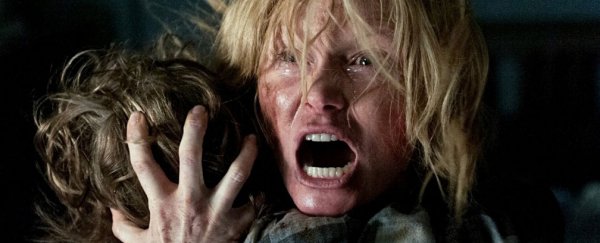We've all wanted to shout, "He's behind you!" at the onscreen victims of impending danger at least once in our movie-going lives, and it's this kind of audience-protagonist relationship that lies at the heart of what we find truly horrifying, a new study has found.
To come up with a new framework for which types of celluloid thrills scare us the most, Keith Bound from the University of Nottingham in the UK attached receptors to volunteers' sweat glands to measure the electrical activity in their skin as they watched a series of 32 short film clips assembled from eight feature-length horror films. Bound was looking for the kinds of electrodermal responses that occur when we're nervous, stressed or scared, which are created by the release of sweat from our eccrine glands - for example, when we get sweaty palms.
Bound combined these electrodermal measurements and other kinds of physiological responses - such as volunteers closing their eyes or turning away from the screen - with viewer feedback, and the results indicated that differing levels of 'psychophysiological' fright are experienced from the following four suspense situations:
Direct: We see the film in the first person, as if we are the character in the film.
Shared: When we empathise with a fictional character's situation.
Vicarious: The viewer knows a fictional character's life is threatened, but they are not aware of the danger.
Composite: Direct, shared, and vicarious suspense synchronised together.
Of these four kinds of horror scenes, audiences experience the most dread and tension when the relationship with the protagonist is vicarious, with the viewer knowing what's about to happen but the fictional character being completely unaware.
In other words, there's a very good reason people feel like yelling, "He's behind you!" even when they're in a crowded cinema.
Bound's study has been presented at conferences in the USA and UK, and forms the basis for his entertainment consultancy business, Receptive Cinema, which launched earlier this month.
"These findings provide evidence to support Alfred Hitchcock's assumption that vicarious suspense is the most consistent method to generate an intense form of anxiety and suspense," Bound said in a press release. "But cinematic techniques such as cinematography, editing, sound and set design also play a part in the viewer experience."
